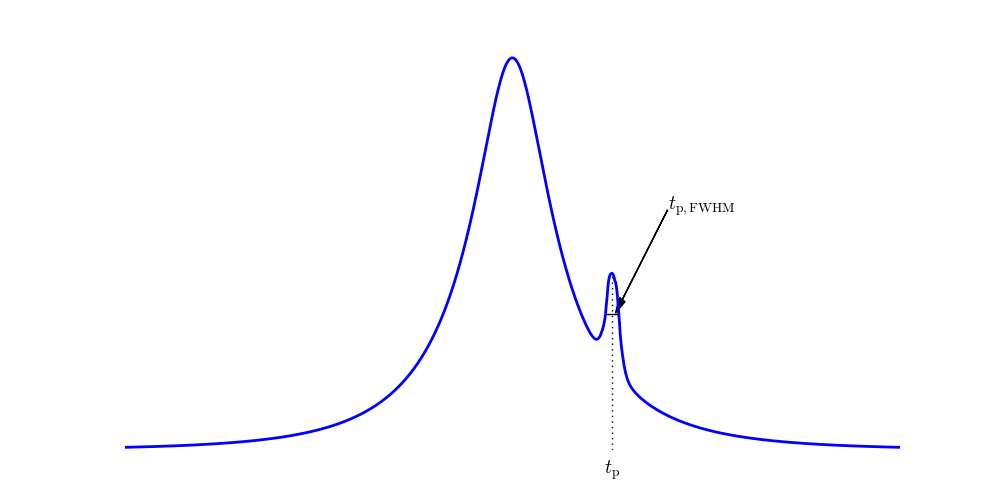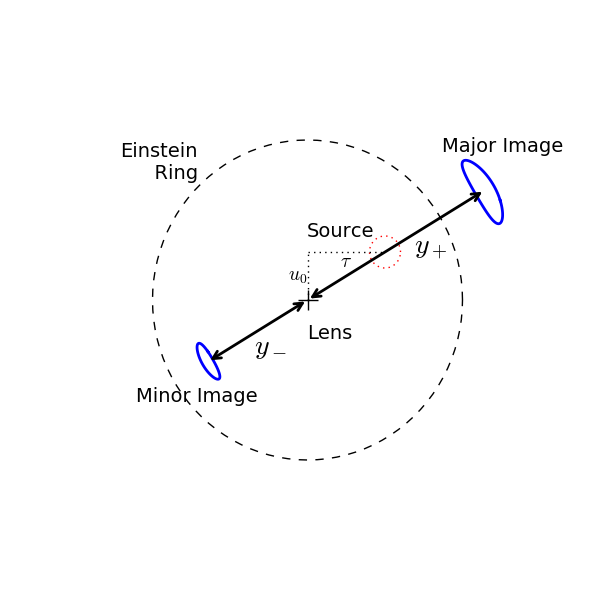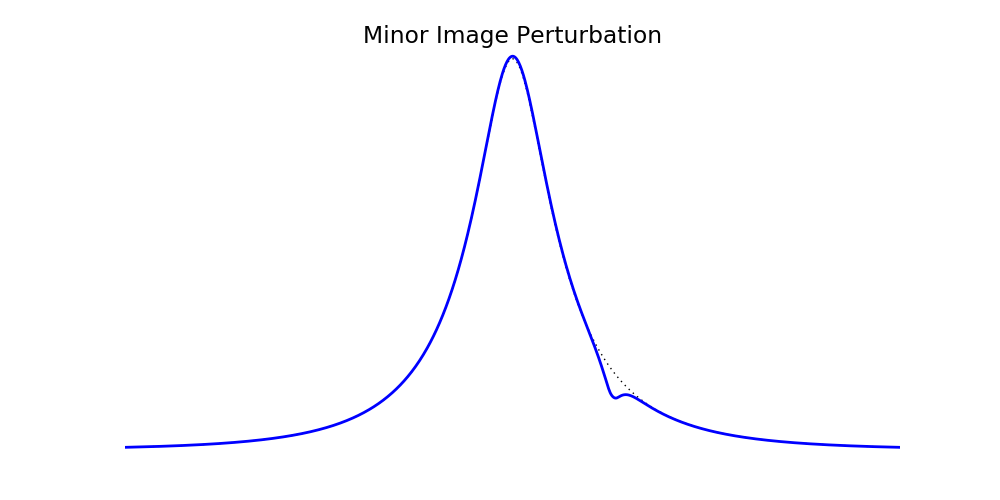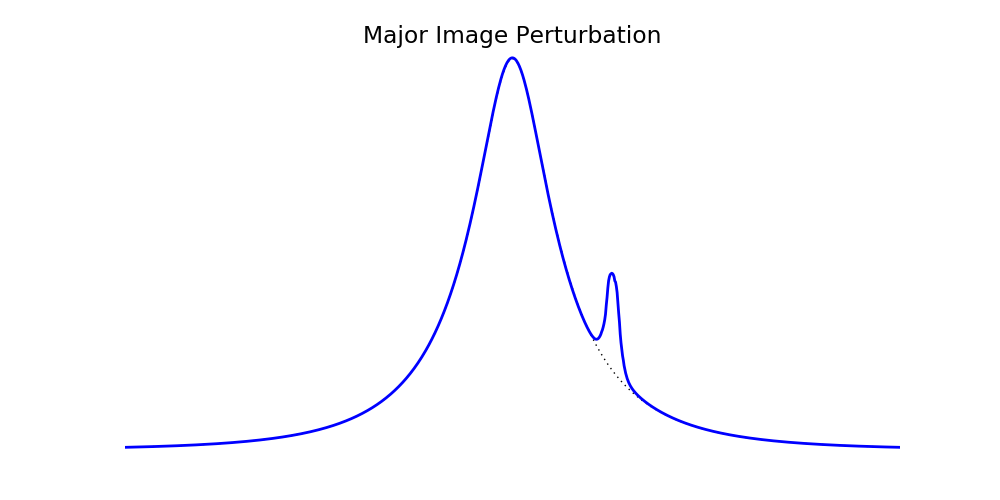
by Jennifer Yee
Gaudi & Gould (1997) showed that the parameters of a planet (s and q) can be approximated analytically based on light curve observables.
First, determine the parameters of the underlying stellar event ( t0, u0, tE) following Tutorial 1. Then, measure the time of the planetary perturbation tp:

Combined with the point lens parameters, you can calculate τ and therefore, u at that time. This gives the source position relative to the lens. Since a planet must perturb one of the images to be detected, to first order, this means the planet must be at the location of one of the images:

The position of the images is given by: y± = ± (½) (√(u2 + 4) ± u), so the planet location, s must be either y+ or y-.
If the planet perturbs the minor image, it will tend to destroy that image, leading to a decrease in magnification. On the other hand, a planet will always further magnify a major image:


Therefore, the form of the perturbation will show which solution is correct.
The size of the Einstein ring is proportional to the square root of the mass:
| Einstein Ring = | θE ∝ | M1/2 |
Therefore, the ratio of the duration of the planetary perturbation to the duration of the event should be proportional to the square root of the mass ratio. Equivalently,
| Mass ratio = | q = | mp | = | tE,p2 |
| Mstar | tE,star2 |
Try calculating the planetary parameters for one (or more) of the following events:
OGLE-2005-BLG-390L MOA-2009-BLG-266L MOA-2010-BLG-328L MOA-2010-BLG-353L MOA-2011-BLG-028L OGLE-2012-BLG-358L OGLE-2012-BLG-406L MOA-2013-BLG-605L OGLE-2014-BLG-1760